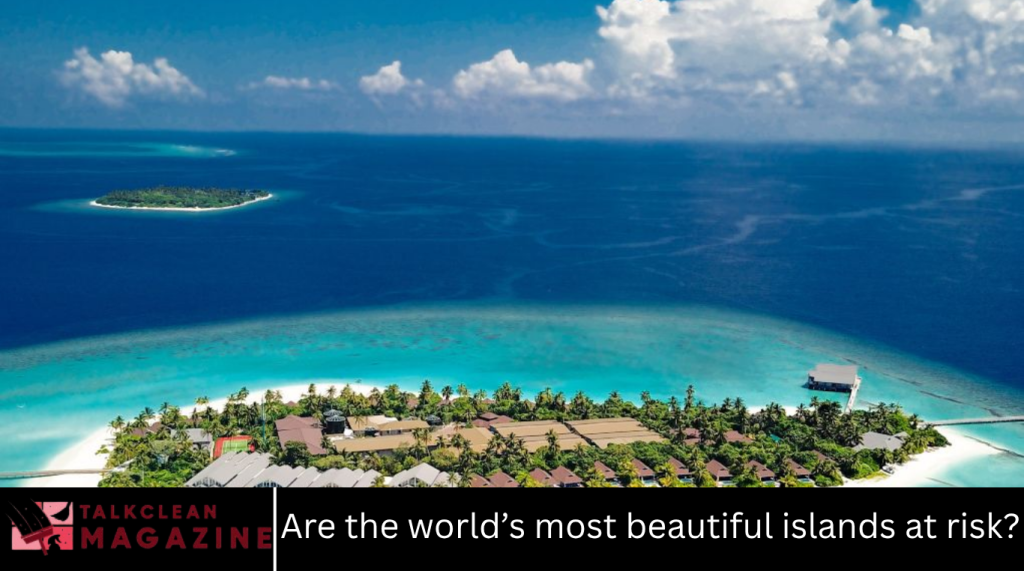The world’s most beautiful islands are often synonymous with paradise—pristine beaches, crystal-clear waters, vibrant marine life, and lush vegetation. These islands attract millions of visitors each year, fueling local economies and offering a sanctuary for nature lovers. But beneath their breathtaking beauty lies a growing concern: many of these islands are facing unprecedented threats that put their very existence at risk.
From rising sea levels and climate change to over-tourism and habitat destruction, the challenges are multifaceted. This article explores the main dangers confronting the world’s most stunning islands, the impact on local communities and ecosystems, and what can be done to preserve these natural treasures for future generations.
The Allure of the World’s Most Beautiful Islands
Islands such as the Maldives, Bora Bora, Seychelles, Santorini, and Bali are renowned for their unique ecosystems and cultural richness. Each island offers something distinct—whether it’s the coral reefs of the Great Barrier Reef Islands or the volcanic landscapes of Hawaii.
Tourism plays a vital role in their economies, providing livelihoods to millions. The beauty of these islands is not only a source of joy but also a crucial asset for cultural identity and biodiversity conservation.
The Biggest Threat: Climate Change and Rising Sea Levels
One of the most alarming risks is climate change. Many beautiful islands are low-lying, making them extremely vulnerable to rising sea levels caused by global warming. According to scientific studies, sea levels could rise by up to one meter by the end of the century if current trends continue.
This increase in sea level can lead to:
- Coastal erosion
- Saltwater intrusion into freshwater sources
- Flooding of homes and infrastructure
- Loss of habitats for native plants and animals
For islands like the Maldives and Tuvalu, some of the lowest-lying countries in the world, this threat is existential. Entire islands could become uninhabitable or disappear altogether.
Environmental Degradation and Habitat Loss
Beyond climate change, human activity has contributed significantly to the degradation of island ecosystems. Deforestation for agriculture or construction, coral reef damage from pollution or irresponsible tourism, and the introduction of invasive species all harm biodiversity.
Coral reefs, which protect many islands from storm surges and support marine life, are bleaching and dying due to warming ocean temperatures and ocean acidification. This loss threatens not only marine biodiversity but also fishing communities that rely on reefs.
Over-tourism: A Double-Edged Sword
Tourism is a double-edged sword for many islands. While it generates revenue, excessive tourist numbers can overwhelm fragile ecosystems. Over-tourism leads to:
- Waste management challenges
- Water scarcity
- Increased pollution (plastic, sewage, emissions)
- Disturbance to wildlife
For example, islands like Bali and Santorini have seen rapid increases in visitors, leading to environmental stress and cultural shifts. Sustainable tourism models are needed to balance economic benefits with conservation.
Socioeconomic Impacts on Island Communities
The environmental risks faced by islands also translate into socioeconomic challenges for local residents. Loss of land or damage to natural resources can lead to displacement, loss of livelihoods, and food insecurity.
Many island nations have limited resources and infrastructure to respond to disasters or long-term climate impacts. This vulnerability exacerbates inequality and threatens cultural heritage.
Conservation and Adaptation Efforts
Despite the risks, many island nations and organizations are actively working to protect these natural wonders. Efforts include:
- Coral reef restoration projects
- Mangrove reforestation to protect shorelines
- Renewable energy initiatives to reduce carbon footprints
- Sustainable tourism guidelines and limits on visitor numbers
- International cooperation on climate change mitigation and funding
Innovative solutions, such as building seawalls and relocating vulnerable communities, are also being explored.
What Can We Do to Help?
Everyone has a role in preserving the world’s beautiful islands. Some actions include:
- Supporting sustainable tourism operators who prioritize conservation
- Reducing carbon footprints to combat climate change
- Advocating for stronger environmental policies and climate action
- Raising awareness about the challenges islands face
- Supporting organizations that protect marine and island ecosystems
Frequently Asked Question
Which islands are considered the most beautiful in the world?
Popular choices include the Maldives, Bora Bora, Seychelles, Santorini, Bali, Fiji, Hawaii, and the Galápagos Islands, known for their stunning landscapes and biodiversity.
How does climate change threaten islands specifically?
Climate change causes sea level rise, increased storm intensity, coral bleaching, and changing weather patterns that threaten island ecosystems and habitability
What is coral bleaching, and why is it dangerous?
Coral bleaching occurs when corals expel the algae living in their tissues due to stress (usually heat), turning white and often dying. This disrupts marine ecosystems and reduces fish populations.
Can tourism be sustainable on islands?
Yes, sustainable tourism involves limiting visitor numbers, promoting eco-friendly practices, supporting local communities, and minimizing environmental impacts.
Are island governments doing enough to protect their environments?
Many are taking significant steps but face resource and capacity limitations. International support and cooperation are crucial for effective protection.
How does rising sea level affect island freshwater supplies?
Saltwater can infiltrate freshwater lenses under islands, contaminating drinking water and agricultural soils, making them less productive.
What are some ways to help protect island environments?
Support eco-conscious travel, reduce plastic use, advocate for climate policies, and contribute to conservation projects focused on island ecosystems.
Conclusion
The world’s most beautiful islands are indeed at risk, but there is hope. Through global cooperation, sustainable practices, and innovative conservation efforts, we can protect these jewels of the planet. Preserving these islands means safeguarding biodiversity, cultures, and economies that depend on their survival. It’s a shared responsibility—one that requires urgent attention and action to ensure these paradises endure for generations to come.


